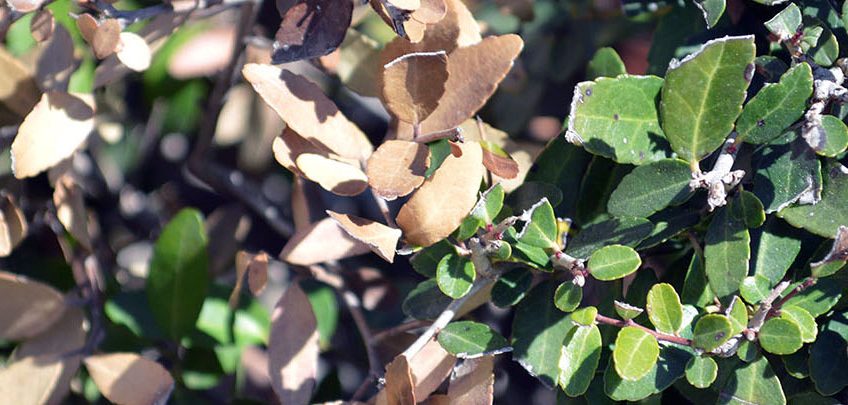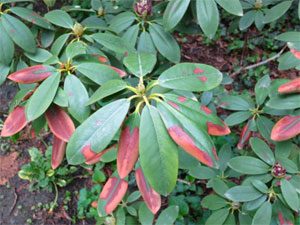January 2019 - Author Urban Tree
When it’s 95° F in the middle of August, and it hasn’t rained for two months, it’s easy to see the effect of weather on your trees and shrubs. Leaves wilt, the grass turns brown, and some plants even die if not watered. Extreme winter weather can also affect the health of your plants in a number of ways as well, but these are not as noticeable to the untrained eye.
Broad-leafed evergreens, like rhododendrons and azaleas, are especially vulnerable in the winter. Since their leaves are present all winter long, they are subject to drying out from winter winds. As water is not available, because it is frozen, they dry up and die. In the spring you will see areas on the leaf, or even an entire leaf, which have died. Fortunately, there are materials available that help reduce the amount of water that is lost through the leaves, thereby reducing “winter damage”.
Native plants are well adapted to extreme cold temperatures, but can become damaged when subjected to large variations in temperatures. When winter temperatures warm for an extended period of time, plants may start to break their winter dormancy. As dormancy breaks, the moisture level in the buds increases. If the temperatures decrease back below freezing, the buds may freeze due to the increased moisture levels. This happened several years ago here in New England when we experienced above 60° weather for nearly a week in March. This was followed by several days of temperatures in the mid-teens. Magnolias where hit especially hard when almost all their flower buds froze and died before opening.
Winter damage on Rhododendron leaves
Unlike most native plants, some non-native ornamental plants can be severely damaged by extreme cold temperatures. This is because the moisture level in these plants’ cells remains relatively high compared to native plants. The extreme cold temperatures cause the water in individual cells to freeze, leading to their death. When selecting ornamental plants it is very important to know what their “hardiness’ is and how low of a temperature they can tolerate.
Another consequence of the freeze/defrost cycle is root damage. The moisture in the ground expands dramatically when frozen, potentially damaging the fine surface roots. Bare soil is very prone to this expansion as the dark soil warms up quickly during the day and then re-freezes at night. A thick mulch layer can help insulate the soil and maintain a more constant temperature. Another benefit of maintaining a constant soil temperature is that the plants are less likely to prematurely break their winter dormancy.
In short, just because plants undergo dormancy in the fall does not mean they are not vulnerable to weather conditions. Fortunately there are several actions that can be taken to help your landscaped plants survive the winter.
- First, take actions that can limit water loss from above ground plant parts. Anti-dessicant sprays are effective for broadleaf evergreens as well as wind screens and burlap coverings.
- Make sure your mulch layers are 2 to 4 inches thick around the root zone to help regulate soil temperatures.
- Keep snow off evergreens as much as possible to help reduce the humidity around the needles which can lead to disease issues.
- Perhaps the most important step one can take to help your plants survive the winter weather is to make sure they go into the winter months as healthy as possible by fertilizing, watering, appropriate pruning, and maintaining correct mulch levels.
Working with the experienced professionals at Urban Tree Service will ensure that not only are your plants healthy in the fall, but that they remain healthy throughout the winter.
Ed Roy is an ISA Certified Arborist who has more than 10 years of experience with Urban Tree Service.

